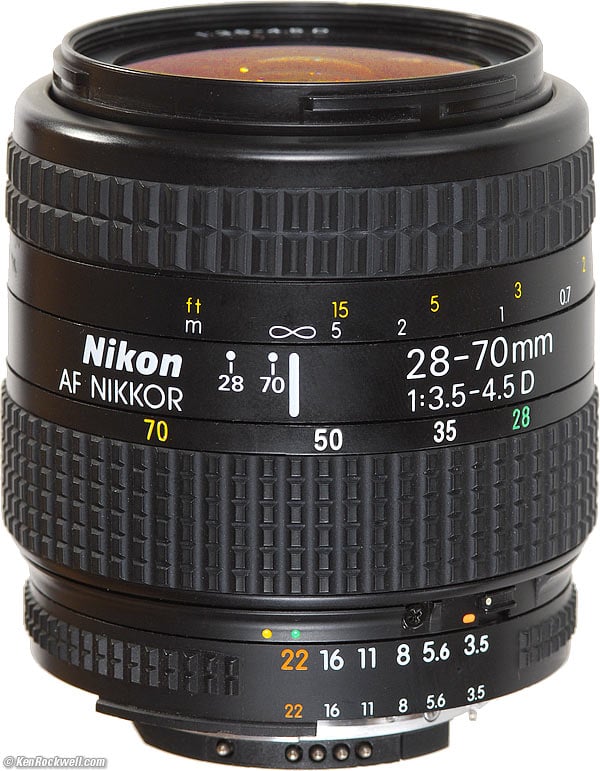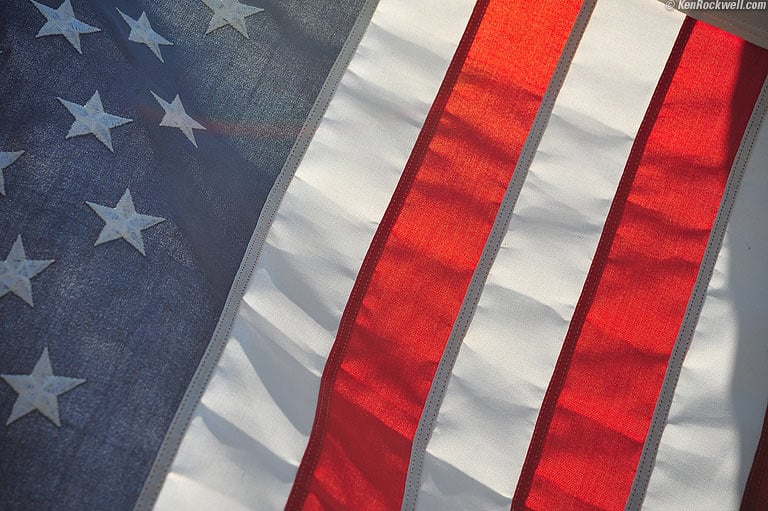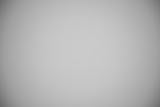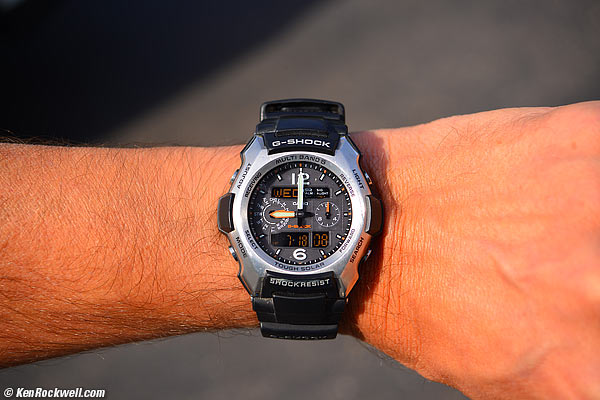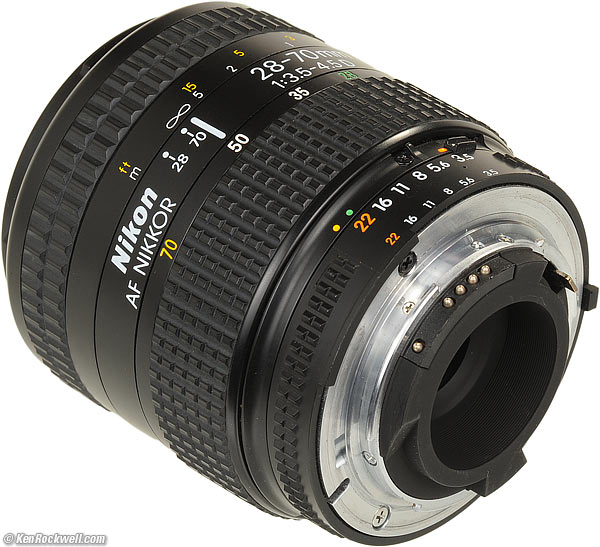Home Donate New Search Gallery Reviews How-To Books Links Workshops About Contact
Nikon
28-70mm
f/3.5-4.5 AF and AF-D (1991-1999)
© 1999-2012 KenRockwell.com
Intro Specs Performance Recommendations
Nikon AF Nikkor 28-70mm f/3.5-4.5D (FX, DX and 35mm coverage, 52mm filters, 9-blade diaphragm, 12.4 oz./353g, 1.3'/0.4 m close focus, about $80 used). enlarge. This free website's biggest source of support is when you use these links, especially this link directly to them at eBay (see How to Win at eBay) or at Adorama, when you get anything, regardless of the country in which you live. Thanks! Ken.
Sample Image
American Flag, Lucia, California, 11:51 AM, 19 June 2010. bigger. (NIKON D3, Auto ISO 200, Nikon 28-70mm f/3.5-4.5 AF-D at 70mm, Professional exposure (P) mode chose f/11 at 1/500, hand-held. Details.)
July 2012 Nikon Reviews Nikon Lenses All Reviews
Ideal Uses: Perfect for use on FX digital and 35mm.
Not for: I wouldn't bother with this on a DX camera. I'd use any DX lens, like the 18-55 VR kit lens, instead. Manual focus and everything else works fine, but his lens won't autofocus with the cheapest D40, D40x, D60, D3000, D3100, D3200, D5000 or D5100.
Introduction top
Intro Specs Performance Recommendations
|
Adorama pays top dollar for your used gear. I use these stores and ScanCafe. I can't vouch for ads below.
|
My Nikon 28-70mm is one of my very favorite Nikon lenses because of its small size and weight, handy zoom and macro ranges, perfect ergonomics, a real 9-bladed diaphragm, and it's plenty sharp on my newest 36 MP FX D800 and D800E.
All Nikon's recent cameras like the D90, D3100, D3200, D5000, D5100, D7000, D4, D800 and D800E already have this lens' data in them for distortion correction in-camera!
When new, it was the standard lens kitted with the Nikon F100, until it was replaced by the newer 28-105mm AF-D. This 28-70 is a very compact and high quality midrange zoom.
It works great on FX digital and 35mm Nikons, as well as most DX cameras.
This little gem was introduced to allow people to use a camera's built-in flash even at 28mm. Previous lenses, like the excellent 28-85mm f/3.5-4.5 AF were so big that the lens would cast a shadow into the image from a camera's built-in flash at 28mm.
This 28-70 is the fastest and best super-compact midrange zoom ever made by Nikon. All the others made later this size were crappy plastic-mount f/5.6 designs, or got bigger for the same quality or speed.
This was Nikon's first hybrid aspherical lens, which is why it gives such great performance in such a small package. This was a $500 lens in the 1990s ($350 before inflation). Every other aspherical Nikon lens before this cost over $1,000, so this was a groundbreaker for Nikon.
This is a traditional AF (screw) type lens and works on almost every camera Nikon has made since 1959.
This is an FX lens, and works especially well with on FX, 35mm and DX Nikons like the D4, D800, D800E, D7000, D700, D3X, D300s and F6. It works fantastically on manual-focus cameras like the F2AS, F3, FE and FA, since it has real manual-focus and aperture rings that work exactly as they should.
It works great with almost every film and digital Nikon camera made since 1977. If you have a coupling prong added to the diaphragm ring, it's perfect with every Nikon back to the original Nikon F of 1959.
The only incompatibility is that it will not autofocus with the cheapest D40, D40x, D60, D3000, D3100, D3200, D5000 or D5100, but if you focus manually, everything else works great. These cameras have in-finder focus confirmation dots to help you.
See Nikon Lens Compatibility for details on your camera. Read down the "AF, AF-D (screw)" column for this lens.
1991-1992
The first version of this 28-70 appears.
It's the same thing as the next "D" version, without the D feature.
Nikon made about 100,000 of this non-D version.
1992-1999
Nikon added the "D," or distance-coupling, feature.
This helps get more accurate flash exposure, and allows the newest D90, D3100, D3200, D5000, D5100, D7000, D4, D800 and D800E DSLRs to correct the distortion automatically in-camera!
Nikon made about 250,000 of this version.
My lens seen here was made about March 1998.
In 1999 this compact 28-70mm lens was replaced by the bigger 28-105mm AF-D,
Corrected for inflation, 2012* |
Dollars at the time* |
|
1991 |
$475 |
$280 |
1992 |
$430 |
$265 |
1994 |
$510 |
$330 after rebate |
1995 |
$690 |
$460 |
1996 |
$525 |
$360 |
1997 |
$550/470** |
$385/330** |
1998 |
$375/425** |
$270/300** |
1999 |
$200 used |
replaced by 28-105D |
2007 |
$110 |
$99 used |
2012 |
* At full NYC discount. Very few people bought their lenses this inexpensively back then.
** USA/gray.
Specifications top
Intro Specs Performance Recommendations
Name
Nikon calls this the Nikon AF NIKKOR 28-70mm f/3.5-4.5 D.
AF: Autofocus.
NIKKOR: NIkon's brand name for their lenses.
D: Sends focus distance information to the metering system.
Aspherical: Specially shaped elements greatly improve sharpness at large apertures, in the corners and allow for a much smaller lens.
All this and more explained in greater depth on my Nikon Lens Technology page.
Focal Length
28-70mm.
Used on a DX camera it gives angles of view similar to what a 43-107mm lens would give on an FX or 35mm film camera. See also Crop Factor.
Maximum Aperture
f/3.5 - 4.5.
Optics
8 elements in 7 groups.
One of these is a hybrid aspherical element, meaning Nikon glues a very thin piece of aspherical plastic to a conventional glass element to give it an aspheric shape at a price of under $1,000.
Diaphragm
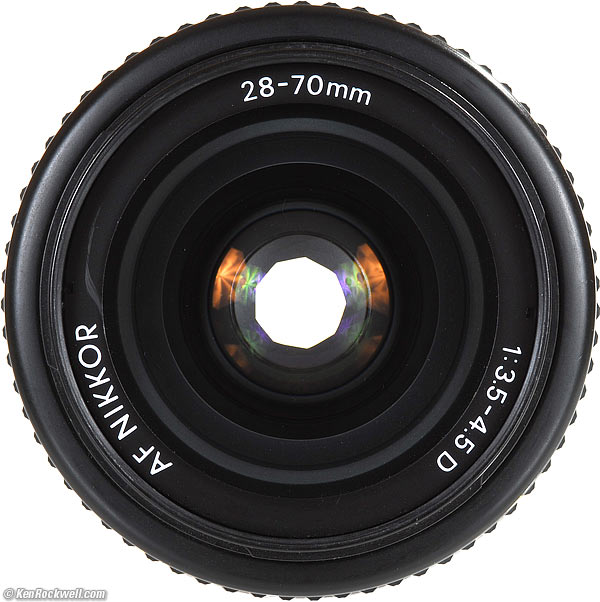
Exquisite 9-bladed diaphragm (shown at 50mm at f/5.6).
9 straight blades.
Stops down to f/22-29.
Nikon reserved 9 bladed diaphragms for their very best lenses. 9 blades gives a circular aperture at every setting, and the reason I care is that I get incredible 18-pointed sunstars.
Close Focus
1.3' or 0.4m from the image plane (the back of the camera), marked, at every focal length without any need for a macro switch.
Maximum Reproduction Ratio
1:4.6.
Infrared Focus Indices
Yes, at 28 and 70mm.
Filter Size
52 mm.
Yay! This has been Nikon's standard small filter size since 1959, making it trivial to carry and buy many filters. This is the same size as most manual focus and small AF lenses, although most of today's larger lenses use larger sized filters.
Hood
HB-6 plastic bayonet.
I have no problem with flare, so I don't bother with a hood.
Size
Nikon specifies 2.7" (67.5 mm) diameter by 2.8" (71 mm) long.
Set to 50mm and focused at infinity, mine measures 2.666" diameter and extends 2.779" from the mounting flange (67.72 x 70.59mm).
The front group extends as you zoom away from 50mm, and the front group also extends as it's focused more closely. It's the longest at 28mm and the closest focus distance.
The front group extends an additional 8.23mm when focused at 0.4m.
From the 50mm setting, the front group extends an additional 3.77 at the 70mm setting and extends an additional 12.65mm at the 28mm setting.
Therefore, set to 28mm and focused at 0.4m, the Nikon 28-70mm f/3.5 grows an additional 12.65 + 3.77 = 16.42mm, or extends a total of 87.01mm from the lens flange:
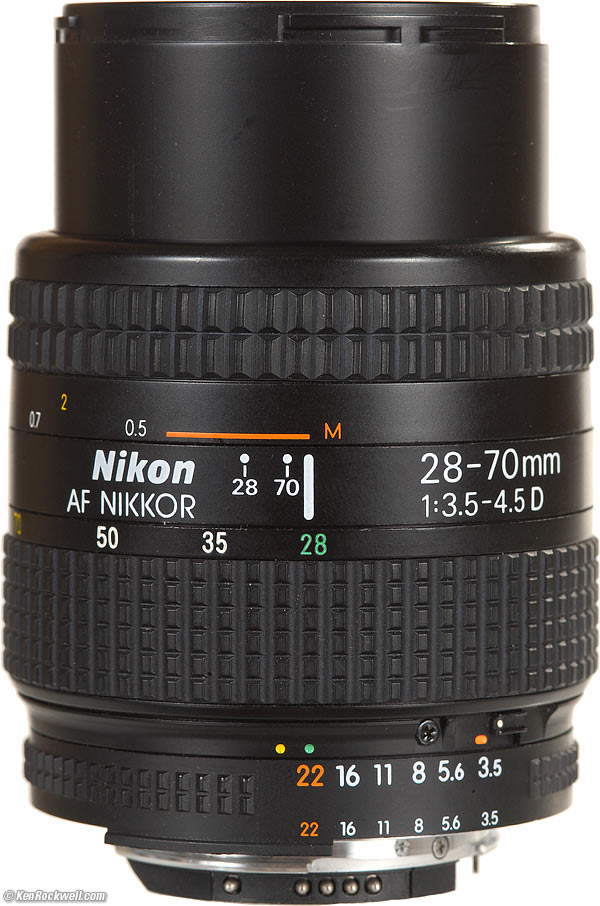
Nikon AF 28-70mm f/3.5-4.5, set to 28mm and its closest focus distance.
Weight
12.450 oz. (352.9g), measured.
12.5 oz (350g) specified by Nikon.
Made in Japan.
Performance top
Intro Specs Performance Recommendations
Overall Auto and Manual Focus Distortion Ergonomics
Falloff Filters Focus Breathing Ghosts Color Fringes
Macro Maximum Aperture Mechanics Sharpness
Overall performance top
The 28-70mm is one of Nikon's smallest and easiest lenses to use, and offers great quality on the D800 and D800E when stopped down a stop.
Autofocus performance top
The Nikon 28-70mm f/3.5-4.5 AF focuses continuously down to 1.3 feet (0.4m) at every setting. I wish every lens worked this well; it needs no separate "macro" range.
AF Speed
AF speed is on the slow side of normal.
One full turn of the AF screw focuses the lens from infinity to 8.'
AF Accuracy
Autofocus is dead-on.
My first sample was a little off at 70mm on my F100, but as of 2007 my newest sample is right-on on my D800E, F6 and D200.
Manual Focus Cameras
The 28-70mm AF is easy to use on manual focus cameras. Manual focus and zoom work great.
Distortion top
Recent digital cameras like the D90, D3100, D3200, D5000, D5100, D7000, D4, D800 and D800E can be set to correct the distortion automatically in-camera!
On 35mm and FX digital cameras
This lens has healthy barrel distortion at 28mm, and almost no distortion at 70mm. Even in the macro range there is no distortion at the tele end.
In-camera correction does a great job from 35mm and longer, and it's pretty good even at 28mm.
All this distortion is easy to correct fully with Photoshop's lens distortion filter using the factors below.
These aren't facts or specifications, they are the results of my research that requires hours of photography and calculations on the resulting data.
Correction factor with uncorrected images |
Correction factor to use with images made with correction ON in D800 |
|
28mm |
+4.0 |
+1.2 |
35mm |
+2.0 |
+0.5 |
50mm |
-0.3 |
0.0 |
70mm |
-0.5 |
+0.5 |
© 2012 KenRockwell.com. All rights reserved.
On DX digital cameras
There is some minor barrel distortion at the wide end, and none at the tele end.
When used on a DX digital camera, plug these figures into Photoshop CS2's lens distortion filter to correct the distortion:
50' (15m) |
Infinity |
|
28mm |
+2.5 |
+3.0 |
35mm |
+1.0 |
+1.2 |
50mm |
0.0 |
0 |
70mm |
0.0 |
0.0 |
Ergonomics performance top
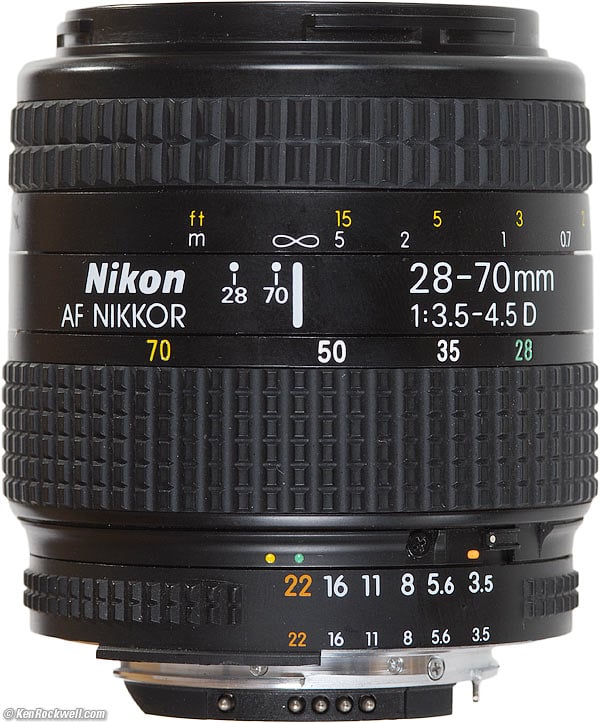
Nikon 28-70 AF-D.
Ergonomics are fantastic. The biggest reason I love this lens so much is its extraordinary zooming. One fingertip is all it takes to change the zoom when shooting one-handed, and the focal lengths are spread out so well that it's always easy to set a precise focal length, especially at the wide end.
Most other zooms squeeze all the wide-angles too close together, making it much more difficult to zoom at the wide end, as there is on the AF-S 24-85mm and 24-85 VR.
So long as you don't need instant manual-focus override, focus is also perfect. You can focus all the way down to right in front of the lens at any focal length, no macro switches needed.
Falloff (darkened corners) performance top
Falloff on FX is invisible, even without Vignette Correction.
It will be even less of an issue on DX (see crop factor).
I've exaggerated this by shooting a gray field and placing these on a gray background:
Nikon 28-70mm AF-D falloff on FX and 35 at infinity, no correction.
© 2012 KenRockwell.com. All rights reserved.
|
Filters, Use with performance top
There is no problem with vignetting, even on FX, DX and 35mm with thick rotating filters or as many as two stacked normal filters (8.0mm total ring thickness excluding rear threads).
If you have a vignetting problem, it gets worse as focused more closely, but I doubt you'll ever see it except on FX with at least three stacked filters.
The filter ring rotates with focus but not with zoom.
Focus Breathing performance top
Of interest mostly to cinematographers focusing back and forth between two subjects, the image from the Nikon 28-70 gets smaller as focused more closely.
Ghosts performance top
There are some minor ghosts if the sun is in your image.
Lateral Color Fringes performance top
There are very few lateral color fringes on the D800E, which correct them automatically. On the lower-resolution DX D200, there are none.
At 28mm, there is some red-blue fringing only in the last millimeter of the far corners.
There isn't any from 35-70mm, except for some very slight green-magenta at the side at 70mm.
Macro performance top
It focuses very close, and it's sharp and undistorted at 70mm.
At closest focus (1.3 feet/0.4m) at 70mm and f/8 on FX D800E at ISO 100.
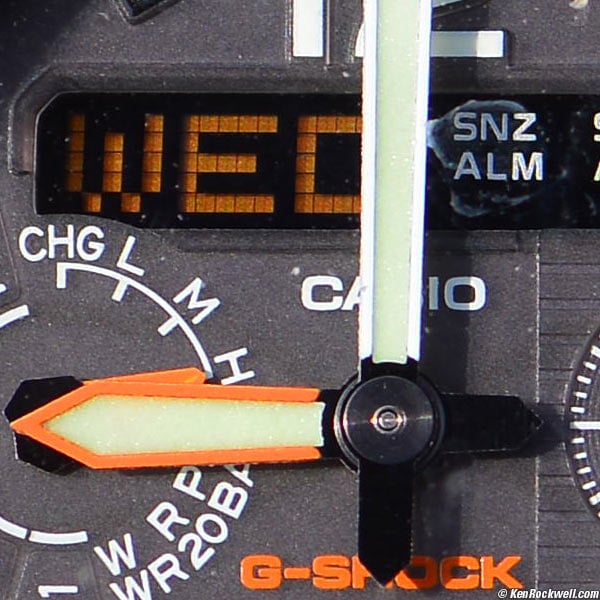
Crop from above image at 100%. If this is 6" (15cm) wide on your screen, the entire image printed this size would br 6 x 4.5 feet (1.8 x 1.2 meters) wide!
Maximum and Minimum Apertures performance top
Maximum |
Minimum |
|
28mm |
f/3.5 |
f/22 |
35mm |
f/3.8 |
f/25 |
50mm |
f/4.2 |
f/29 |
70mm |
f/4.5 |
f/29 |
Mechanics performance top
Rear, Nikon 28-70 AF-D. bigger.
The Nikkor AF 28-70mm f/3.4-4.5 has mechanical quality typical for a $500 zoom from the 1990s. It's made of tougher plastic than today, with a metal mount. It's unusual for a Nikon zoom this small to be made this well.
Filter Threads
Plastic.
Hood
Plastic bayonet.
Hood Mount
Plastic.
Barrel Exterior
Plastic.
Focus Ring
Plastic; rubber covered.
Zoom Ring
Plastic; rubber covered.
Focus Helicoids
Feel like plastic.
Depth-of-Field Scale
None.
Internals
Mostly plastic.
Aperture Ring
Plastic.
Mount
Dull-chromed brass.
Markings
Paint.
Mounting Index Dot
White painted line and black screw-head on mount.
Identity
Painted on barrel.
Serial Number
Laser engraved onto bottom rear of aperture ring.
Rain seal at mount
No.
Noises When Shaken
Lots of clicking.
Made in
Japan.
Sharpness performance top
Warning 1: Image sharpness depends more on you than your lens.
Warning 2: Lens sharpness doesn't mean much to good photographers.
With those caveats, the Nikon 28-70 AF-D is very sharp on a 36 MP FX D800E at the long end and stopped down to f/5.6 or smaller. It's less sharp wide-open at 28mm and in the corners at the wide end
On the D800E
At 28mm
Wide open, it's sharp but veiled all over due to spherical aberration. Corners are blurred.
By f/5.6, it's sharp and contrasty in the center. The FX corners keep improving as stopped down to f/16.
At 35mm
Wide open, it's sharp but veiled all over due to spherical aberration. Far corners are blurred.
By f/5.6, it's sharp and contrasty in the center. The FX corners keep improving as stopped down to f/16.
At 50mm
Wide open, it's sharp but veiled all over due to spherical aberration. Corners are sharp, but lower contrast.
By f/5.6, it's sharp and contrasty all over. It's so sharp that diffraction starts dulling the image by f/11.
At 70mm
Wide open, it's sharp but a little veiled all over due to spherical aberration.
By f/5.6, it's sharp and contrasty all over, becoming even better at f/8 and optimum at f/11. Diffraction starts dulling the image by f/16.
On the DX D200
On my D200, it's a little soft and lower in contrast wide open, but sharpens right up to being excellent at f/5.6 at every focal length.
Used wide-open in daylight, which of course is silly, mine takes on a slightly dreamy look from the spherical aberration.
Sunstars performance top
With its straight 9-bladed diaphragm, it should make magnificent 18-pointed sunstars on brilliant points of light.
Survivability performance top
With no AFS motor, no VR and no RoHS lead-free solder, there isn't anything designed to break in this lens. It has no "10" inside circles logo indicating only a 10-year expected life because this lens is designed with an unlimited potential service life, if well treated.
The only things that can break would be the mechanical focal-length encoder contacts, which are no big deal if broken, and the rest of this lens is all mechanical. Its CPU that talks to the camera's computer also ought to last indefinitely.
Therefore, this lens should always be serviceable if you break something or if the mechanics get gummy. Its electronics are built to last, and everything else likely to break ought to be repairable locally without dedicated parts.
This said, the barrel is made of good plastic. Hit the front of the lens hard enough, and you can crack it, and beat on it enough and you can wear it out; but at least it's not designed to fail like the newest electronic lenses.
Recommendations top
Intro Specs Performance Recommendations
This 28-70mm zoom excels optically and ergonomically. I especially appreciate is small size and 9-bladed diaphragm. If ease of use and size are your prime concerns, get it.
The AF-S 24-85mm and 24-85mm VR zooms sharper wide open and faster focusing, but the zoom ring is cramped at their wide ends and they are loaded with distortion.
For under $100 used, you can't go wrong with this lens.
If you've found the time, effort and expense I expend researching and sharing this research for free, my biggest source of support is when you use these links, especially this link directly to them at eBay (see How to Win at eBay) or at Adorama, when you get anything, regardless of the country in which you live.
Thanks!
Ken.
Help me help you top
I support my growing family through this website, as crazy as it might seem.
The biggest help is when you use any of these links when you get anything, regardless of the country in which you live. It costs you nothing, and is this site's, and thus my family's, biggest source of support. These places have the best prices and service, which is why I've used them since before this website existed. I recommend them all personally.
If you find this page as helpful as a book you might have had to buy or a workshop you may have had to take, feel free to help me continue helping everyone.
If you've gotten your gear through one of my links or helped otherwise, you're family. It's great people like you who allow me to keep adding to this site full-time. Thanks!
If you haven't helped yet, please do, and consider helping me with a gift of $5.00.
As this page is copyrighted and formally registered, it is unlawful to make copies, especially in the form of printouts for personal use. If you wish to make a printout for personal use, you are granted one-time permission only if you PayPal me $5.00 per printout or part thereof. Thank you!
Thanks for reading!
Mr. & Mrs. Ken Rockwell, Ryan and Katie.
Home Donate New Search Gallery Reviews How-To Books Links Workshops About Contact

